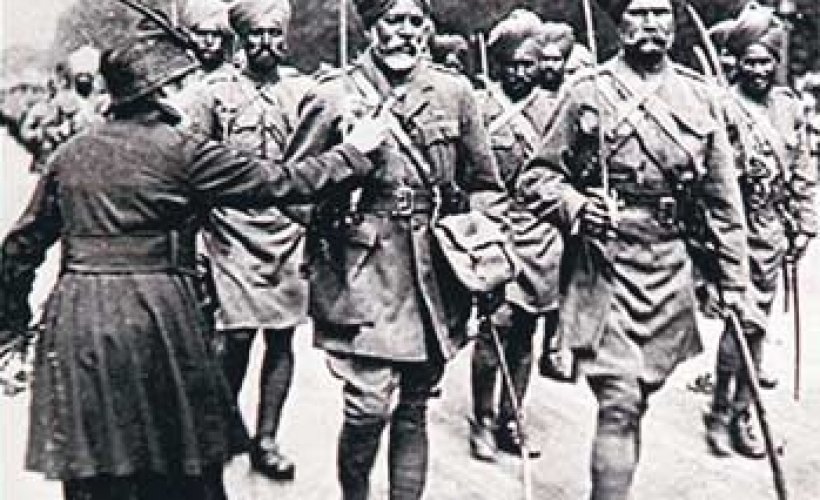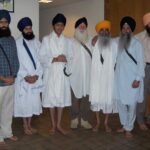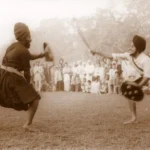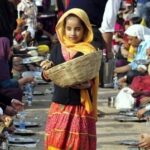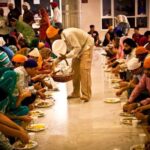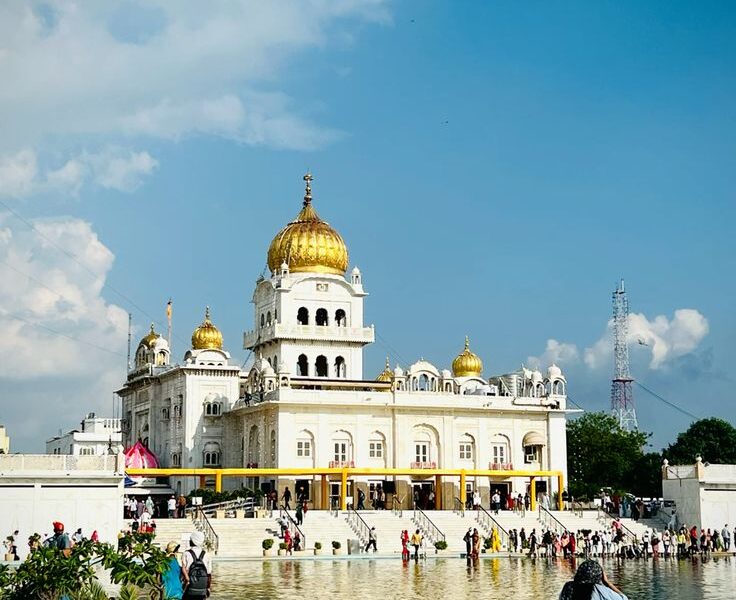During Maharaja Ranjit Singh’s Khalsa Kingdom, yearly incursions from that direction came to an end. India owes a lot to the Khalsa’s martial heritage.
The most significant component of Sikh heritage is probably this tradition. Unfortunately, though, Indian historians and politicians only grudgingly, if at all, acknowledge this magnificent tradition’s influence on the history of modern India. Few historians have looked at Indian and Sikh history through the lens of Sikh martial culture.
During Maharaja Ranjit Singh’s Khalsa Kingdom, yearly incursions from that direction came to an end. India owes a lot to the Khalsa’s martial heritage.
The most significant component of Sikh heritage is probably this tradition. Unfortunately, though, Indian historians and politicians only grudgingly, if at all, acknowledge this magnificent tradition’s influence on the history of modern India. Few historians have looked at Indian and Sikh history through the lens of Sikh martial culture. In the first half of the 20th century, freedom movements and India’s struggle for independence dominated their preoccupations, which also included religious sects, abstract and opt-out Indian ideologies, petty princedoms at war with one another, the British Raj, communal conflicts, and petty princedoms fighting each other. By understanding Sikh history within the context of that tradition, even Sikh history students do not entirely bring out the important role of the Sikh martial heritage.
Based on the Sikh martial heritage, Anglo-Sikh ties
Throughout the late 19th and early 20th centuries, the bilateral interactions between the British and the Sikhs were also built on the Sikh martial heritage, which was eventually refined via military discipline to become the well-known Sikh military tradition. Benefits flowed in both directions in this unique partnership. The evolution of the Sikh people as a nation, the large-scale recruitment of Sikhs into the Indian Army, the prosperity and growth of Panjab as an agricultural province, the Sikhs’ high educational attainment compared to other Indian communities, the Sikhs’ migration to other nations under British colonial rule, and, of course, the Sikhs’ prominent roles in the two World Wars can all be attributed to this tradition.
The Anglo-Sikh alliance was put under strain by the chaotic Indian mutiny of 1857. The Sikhs, on the other hand, saw no reason to support people who had sided with the British in the invasion of Panjab just eight years prior. Shah Muhamad, a modern Muslim poet, referred to the invasion as “Jang Hind Panjab” (i.e. War between India and Panjab).
Several other advantages resulted from the Anglo-Sikh relationship founded on the Sikh military history. In addition to providing job opportunities in Panjab, the rest of the Indian subcontinent, and abroad—first in the army, then the police, and eventually in other services and professions—it helped Sikh adolescents in the villages of Panjab develop discipline. Sikh troops themselves acquired basic education, which helped them to teach others. Retired service members served as village elders and reformers, and others went on to lead spiritual movements. Sikhs became one of the most educated and wealthiest communities in the British Empire over time, arguably second only to the British themselves. The Sikh diaspora excelled in a variety of professions.
Sikh doctrine and Sikh martial custom
In Guru Nanak’s teachings, the cornerstone of the Sikh saint-warrior, dual-track philosophy of life was laid. He advocated for moral behavior and virtuous living, emphasizing the cost of doing so. He used strong language and issued a direct challenge to his followers:
Step my way and be willing to give your life if you want to play the game of love (i.e., follow this road of genuine behavior to become one with the Lord Creator).
(Page 1412 of Guru Nanak’s Guru Granth Sahib)
After the Fifth Guru, Arjan Dev was killed at Lahore in Panjab, the Sikhs, led by the Sixth Guru, Hargobind (1595–1644), took up guns to protect their faith. Gobind Singh, the Tenth Guru (1666–1708), was ultimately responsible for transforming the Sikhs into the Khalsa, a people who merged the spiritual and material parts of life to become saint-soldiers. The Sikhs’ Akalis (also known as Nihangs) were fiercely committed to the Khalsa cause and served as the core of the Khalsa army, which ultimately overthrew the oppressive Moghul rule.
His Khalsa was given a unique identity by Guru Gobind Singh. The 5 Ks, which comprise the Sikh dastar, became part of the whole Sikh or Khalsa identity going forward: Unshorn hair, an iron bracelet, a little or long sacred sword, a small wooden comb, and special-style nimble shorts are all represented by the words Kesh, Karha, Kangha, and Kachhera. Also, every Sikh male is given the name Singh, which means “lion” and stands for courage, and every Sikh woman is given the name Kaur, which means “princess” and stands for elegance. The egalitarian and socially liberating ideologies of Guru Nanak quickly ran afoul of the ruling class’s and bigots’ prejudices. The entire Hindu Brahmanic religious system founded on caste and social divides was endangered by the emancipation of women, the elimination of the corrupt caste system, and the Guru’s denunciation of frightful superstitions and rites. The Guru was also fighting against the oppression of the ruling classes, including the corrupt judges, the Moghul Emperors in Delhi, the nawabs, the rajahs, and the jagirdars, who were feudal landlords.
